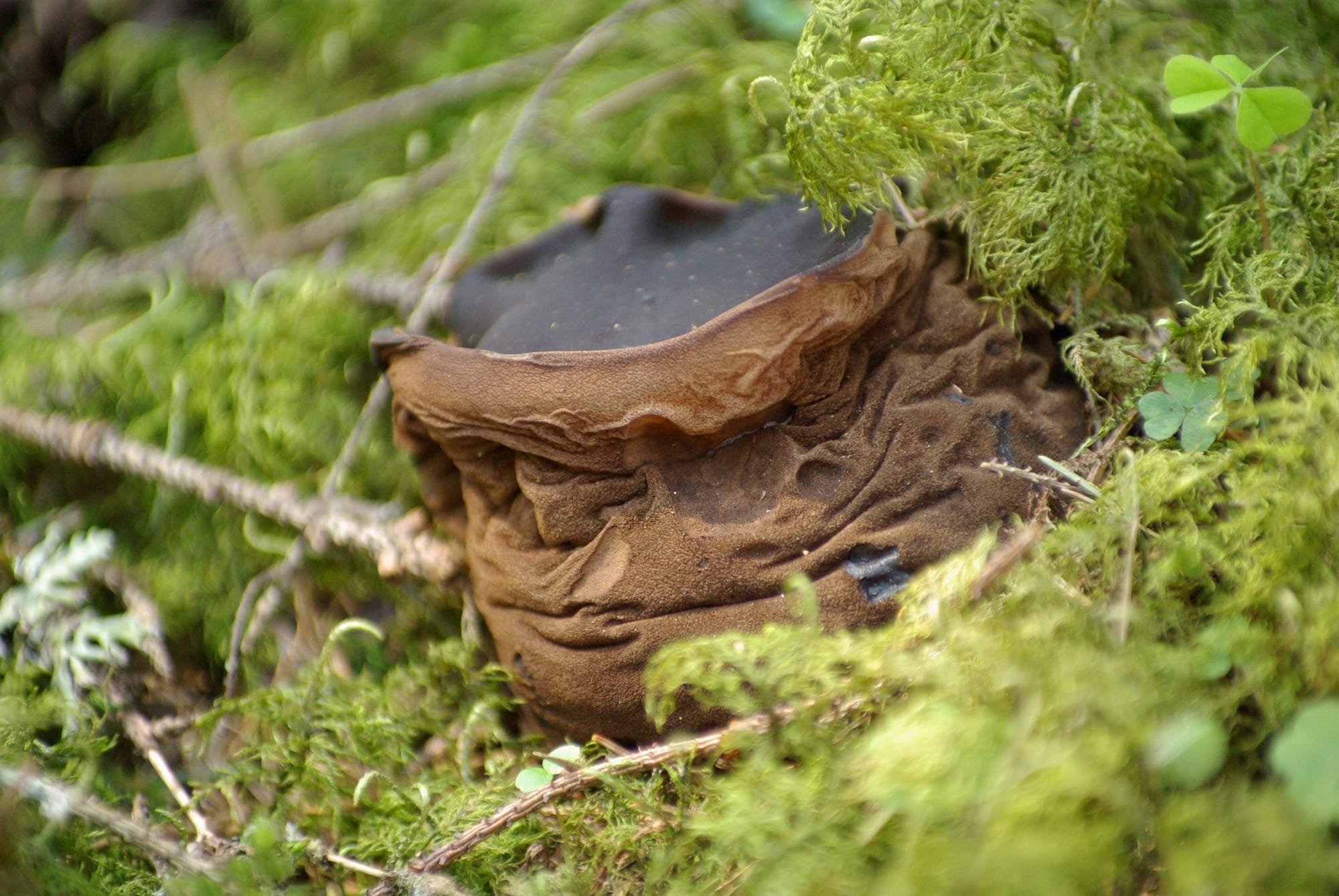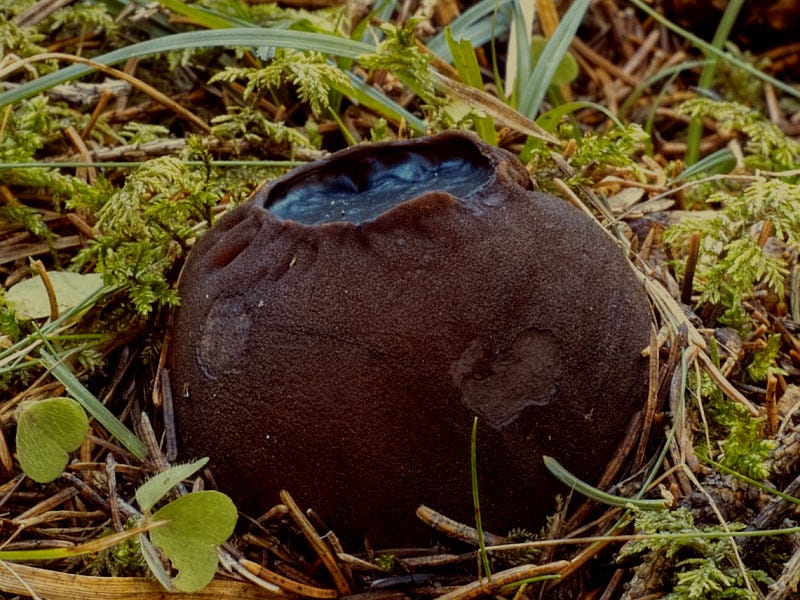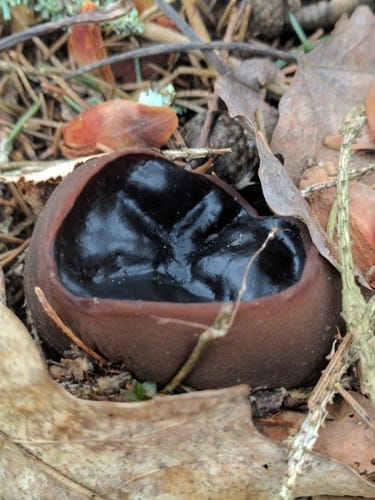
If you recognize the reference in this week’s title (Hamlet by the way), then you probably won’t be too surprised that the species we’ll be talking about today is known as the Witches Cauldron (also the Charred-Pancake Cup). This is Sarcosoma globosum, a type of fungus native to northern Europe and rarely in parts of northeastern North America centered on the Great Lakes.
Witches Cauldron is an ascomycete or sac fungus. That name is not related to its outward appearance, but to a microscopic structure involved in sexual reproduction called an ascus, whose name is derived from the Greek word for sac or wineskin. Like many terrestrial fungi, it is a detritovore, meaning it subsists on decomposing matter (mostly leaf litter in its spruce forest habitat). Unlike some fungi, it is not currently used by people as a food source or for any other tangible benefit.

This species has been studied extensively, especially in Sweden where it is most prevalent. It seems to prefer nutrient-rich soil that is well drained of water, but still near rivers, brooks, or other watercourses. In addition, high density forest habitat is unsuitable for Sarcosoma globosum. This requirement for light spruce forest is part of the reason for its recent population decline.
Populations of Witches Cauldron have declined substantially over the last 50 years (approximately three generations). It has become regionally extinct in several central European countries on the edge of its range such as Germany. This decline is mainly due to a combination of habitat logging and the end of the practice of cattle grazing in forests in the 1950s. This grazing cleared some of the undergrowth from more dense forests making them better suited for the fungus and the cessation of this practice has allowed potential habitat to become too dense and overgrown for it. In addition, this species does not seem to recolonize managed forests after they have been clear-cut for logging.

With these declines continuing, the future for Sarcosoma globosum looks potentially bleak. However, you may recall from last week that I mentioned we would be discussing the Near Threatened category. Indeed, this fungus is currently only listed as such internationally (though it has separate national listings that are more severe). This is because it does not currently meet any of the criteria for Vulnerable status listed in the introduction story for Season 3. It still has a relatively large geographic range and enough mature individuals to not meet those criteria. While its population size has been declining, the rate has been calculated to be only 30%.
Thus, Sarcosoma globosum is a classic case of a species that should be categorized as Near Threatened. The data available do not meet the strict requirements for a more severe classification, but they are close to some of those levels and likely to reach them in the near future. It is also an interesting example of how even minor or inadvertent shifts in human behavior can have an impact on species. The practice of cattle grazing in forests allowed Witches Cauldron to flourish. With it no longer occurring, the effects of habitat loss from logging are even greater.
Some might argue that attempting to save Threatened species is not an appropriate task, because people should not be in the business of picking ‘winners’ and ‘losers’ when it comes to species survival. I personally consider this to be a cop-out and an excuse to do nothing. No matter what actions we take, some species will benefit and others will not. We are already ‘picking winners and losers’. The question is, what effect will those choices have on ecosystems and on our own well-being.
For the next six weeks of this season, we’ll continue moving up the threat levels, with two weeks each on a species or group in the three categories that make up the Threatened umbrella: Vulnerable, then Endangered, then Critically Endangered.